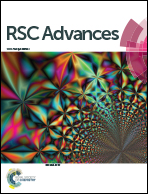Improving the electrostatic precipitation removal efficiency by desulfurized wastewater evaporation
Abstract
A novel technique was developed to improve the removal of fine particles by electrostatic precipitation. The performance of a lab-scale ESP spraying desulfurized wastewater was investigated under controlled conditions in a coal-fired thermal system. The fine particles' properties, electric performance, wet flue gas desulfurization efficiency and pH were analyzed. Moreover, the factors that influence the removal efficiency of ESP, including operating voltage, wastewater flow rate, and atomized droplets' diameter, were also analyzed. It was found that the average diameter of particles increases from 0.15 to 0.5 μm due to the evaporation of desulfurized wastewater, which is confirmed by SEM. Fine particles removal efficiency by ESP was greatly improved from 68% to 83%. Moreover, the ESP removal fine particle efficiency could be affected by the wastewater flow rate, operating voltage, and atomized droplet diameter. Finally, the influence of the WFGD system was analyzed, indicating that the desulfurized wastewater evaporation had little impact on the desulfurization system. This novel technique can improve the removal efficiency of ESP with zero discharge by implementing the desulfurization wastewater evaporation.


 Please wait while we load your content...
Please wait while we load your content...